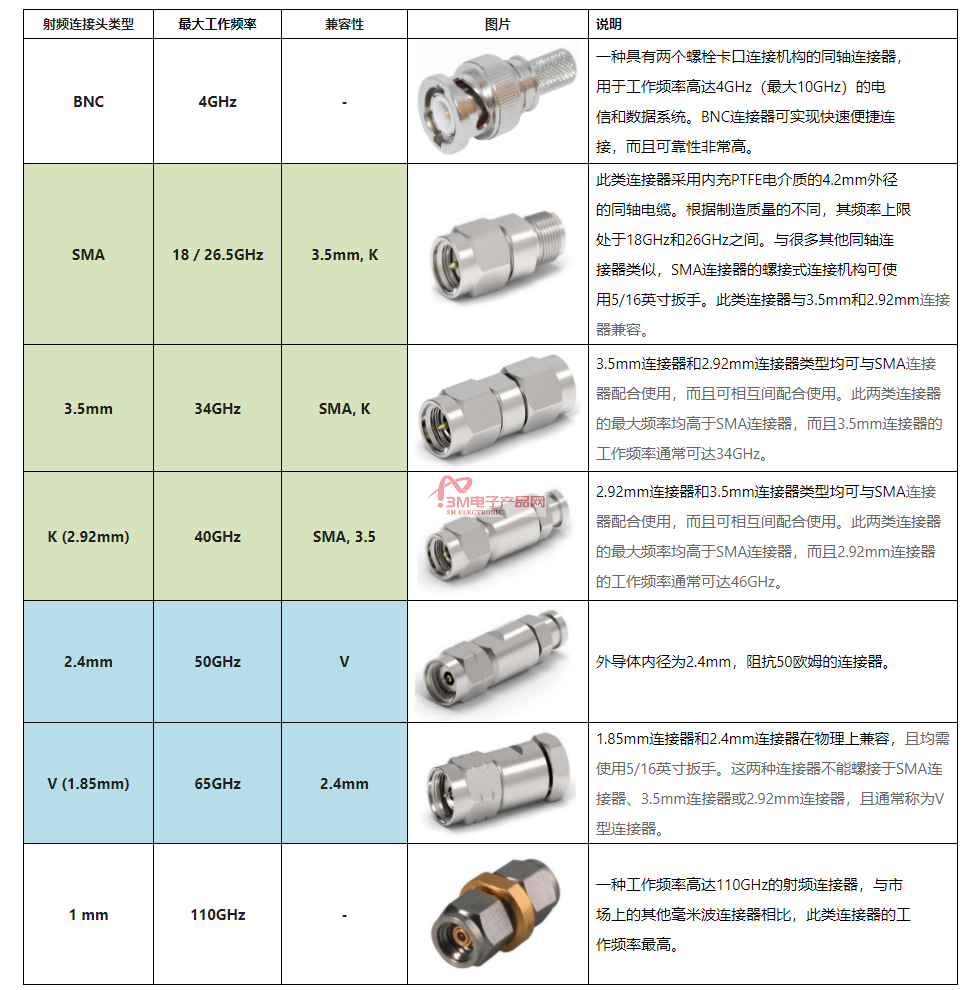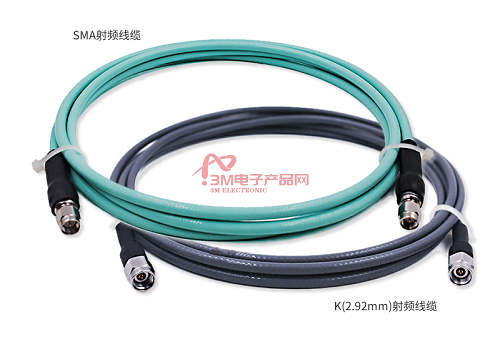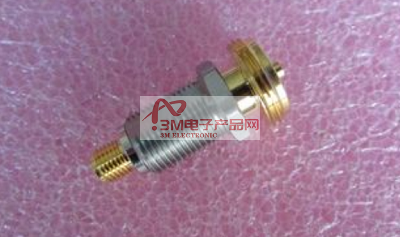Categorization:Product Information
When making high-speed RF signal measurements, the performance obtained depends in part on the instrument used and how the RF cables and connectors are connected to the instrument. For example, the male connector of a photoreceiver, photodetector, etc. is connected directly to the female connector of an instrument such as a BER meter or oscilloscope. If you need to use the appropriate RF cables and connectors and adapters, make sure that it is designed to meet the range of frequency requirements. The following table lists common connectors, their maximum frequency limits, and matching compatibility. If intermediate coaxial cables are used, select shorter cables to minimize loss and verify that their bandwidth ratings are adequate.

In test and measurement applications, it is often difficult to know whether the interface on the instrument can be connected to the probe or instrument, whether to use the SMA interface or the 2.92 interface, etc. The following is a brief introduction to the differences between SMA, 3.5mm, 2.92mm, 2.4mm and other RF connectors. The following briefly introduces the difference between SMA, 3.5mm, 2.92mm, 2.4mm and other RF connector interfaces.

SMA Connectors: The SMA type RF coaxial connector was designed by Bendix and Omni-Spectra in the late 1950's as an OSM connector and was one of the most commonly used RF/microwave connectors at the time. Originally, the SMA connector was designed for use on 0.141″ semi-rigid coaxial cables, and in the military industry as a precision connector for microwave applications with PTFE dielectric fill. In the conditions at the time, due to the small size of the SMA connector, can be in the higher frequency (mating semi-hard cable frequency range of DC ~ 18GHz; mating soft cable when DC ~ 12.4GHz) under the work, and soon gained popularity. Even the later development of millimeter-wave connectors (such as 3.5mm, 2.92mm) are also considered to be mechanically compatible with its 3.5mm connector: 3.5mm connector is the outer conductor diameter of 3.5mm, the characteristic impedance of 50Ω, connecting the body of the 1/4-36UNS-2 inch threaded connector. In the mid-1970s, by the U.S. Hewlett-Packard and Amphenol (mainly developed by HP, early production at Amphenol) introduced a 3.5mm connector, the operating frequency of up to 33GHz, which is the earliest available to millimeter-wave band of an RF coaxial connector. A significant difference from SMA connectors (including Southwest Microwave's "Super SMA") is that the 3.5mm utilizes an air dielectric. The outer conductor of the 3.5mm connector is thicker than that of the SMA connector, and its mechanical strength is better than that of the SMA connector. So not only is the electrical performance better than the SMA connector, but also mechanical durability, repeatability of performance are higher than the SMA connector, so it is more suitable for use in the testing industry.2.92mm connector: 2.92mm connector (some manufacturers call this connector 2.9mm or K-type connector, there are some manufacturers called SMK, KMC, WMP4 connector, etc.) is an outer conductor Inner diameter of 2.92mm, the characteristic impedance of 50Ω, the connection mechanism for the 1/4-36UNS-2 inch thread RF coaxial connectors. Its structure is similar to the 3.5mm connector, only smaller. In 1983, Wiltron William Old.Field senior engineers in the summary and overcome the previous launch of millimeter-wave connectors on the basis of the development of a new type of 2.92mm / K-type connector (K-type connector is the trademark of the Wiltron company), the inner conductor diameter of 1.27mm, can be inserted with the SMA and 3.5 connector. 2.92mm connector in the DC ~ 46GHz band range, with good electrical properties, and can be mechanically compatible with the SMA connector, 3.5mm connector, quickly recognized by the majority of manufacturers, and has become one of the most widely used millimeter-wave connectors in the international community. 2.4mm connector: the outer conductor inner diameter of 2.4mm, the impedance of 50 ohms of the connector, and 2.4mm connector Mechanical compatibility between the 1.85mm connector, is the outer conductor inner diameter of 1.85mm, both impedance are 50 ohms. Their inner diameter size is small, so the working frequency is higher, the nominal frequency of up to 50GHz and 67GHz, respectively. they must not be connected to each other with 2.92mm, 3.5mm or SMA connectors, or directly bring the consequences of connector damage. With the rapid development of millimeter wave technology and high-speed communication technology, SMA, 2.92mm, 2.4mm and 1.85mm connectors are more and more widely used in the military, aerospace, optoelectronics and other fields, and GPPO, GPO and other connectors used in combination with more and more applications.
2, on the 3M electronic products network platform related to the introduction and sales of products brief: 3M electronic products network - professional agent / production / sales of a variety of {connectors | wiring harness | wire and cable products }; if you have a related [connectors | wiring harness | wire and cable products] purchasing / sourcing needs or would like to buy / to understand which connectors | wiring harness | wire and cable products we can provide solutions, please contact the Division I business personnel below; If you have related [connectors | harness | wire and cable products] sales / resources and promotion needs, please click on the ¡¡ Business Cooperation ← ¡" to discuss with a person!